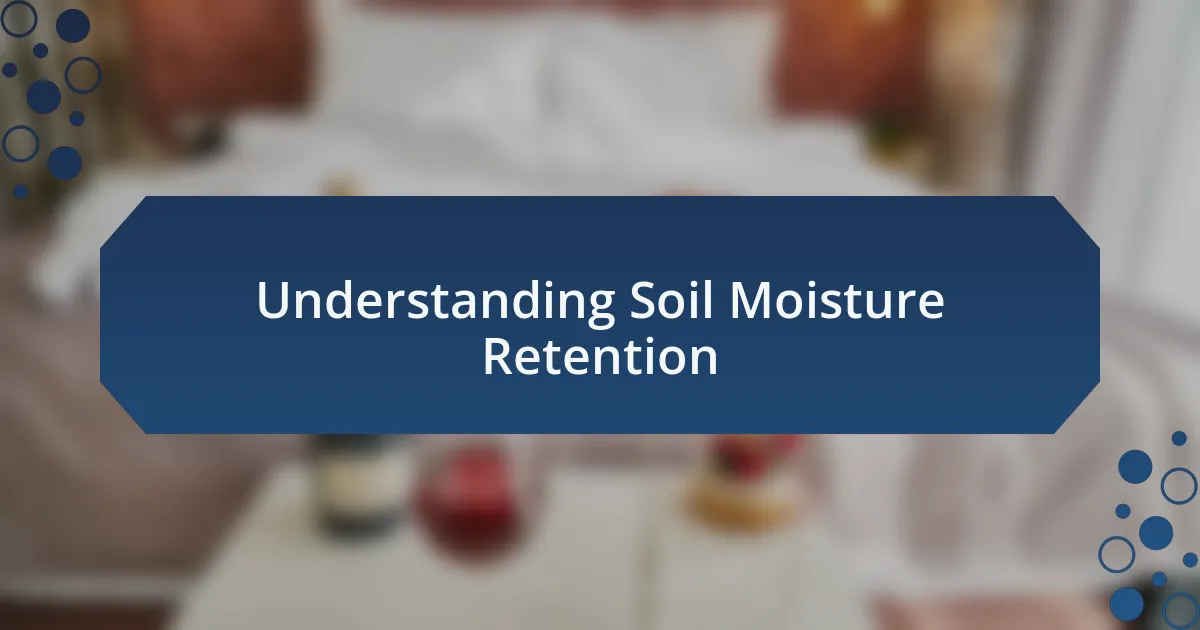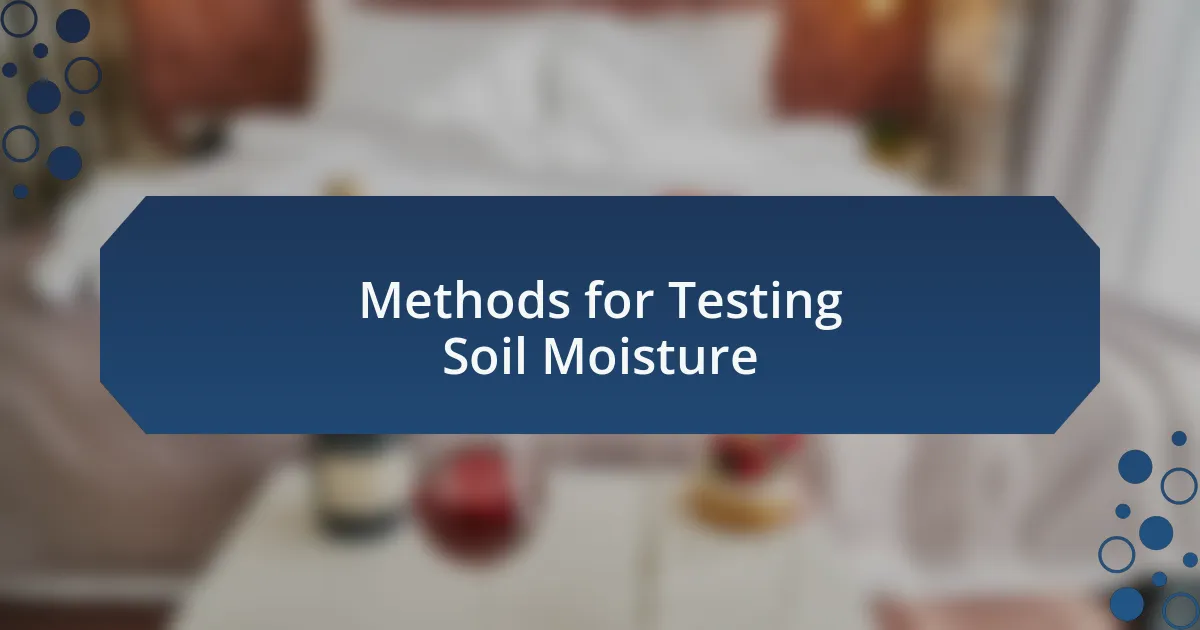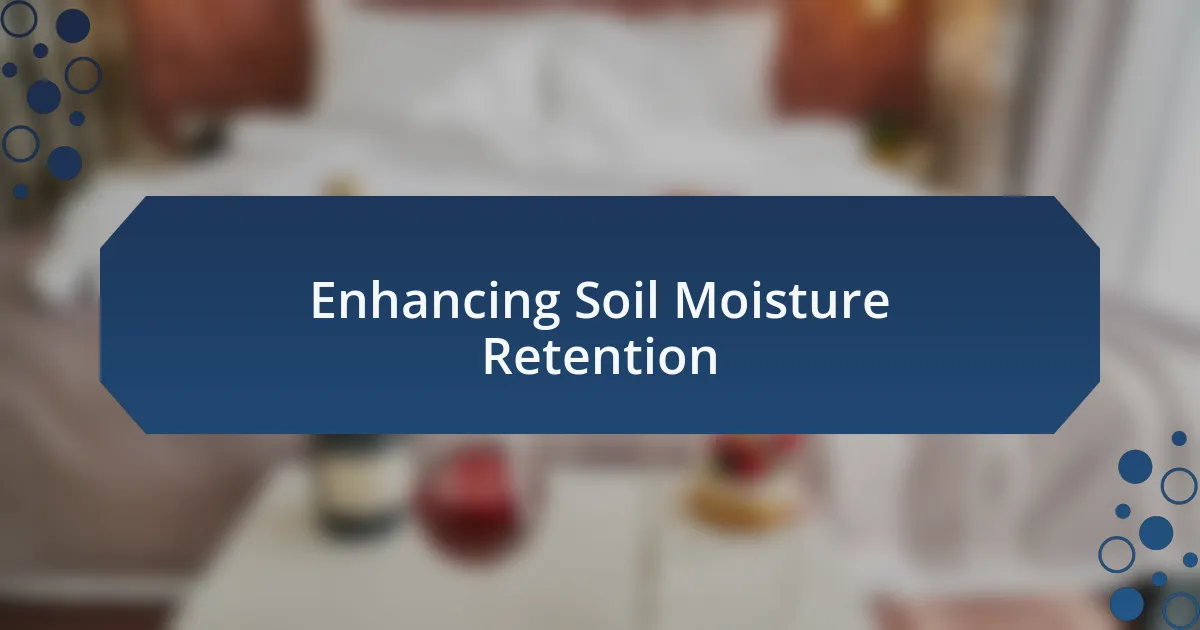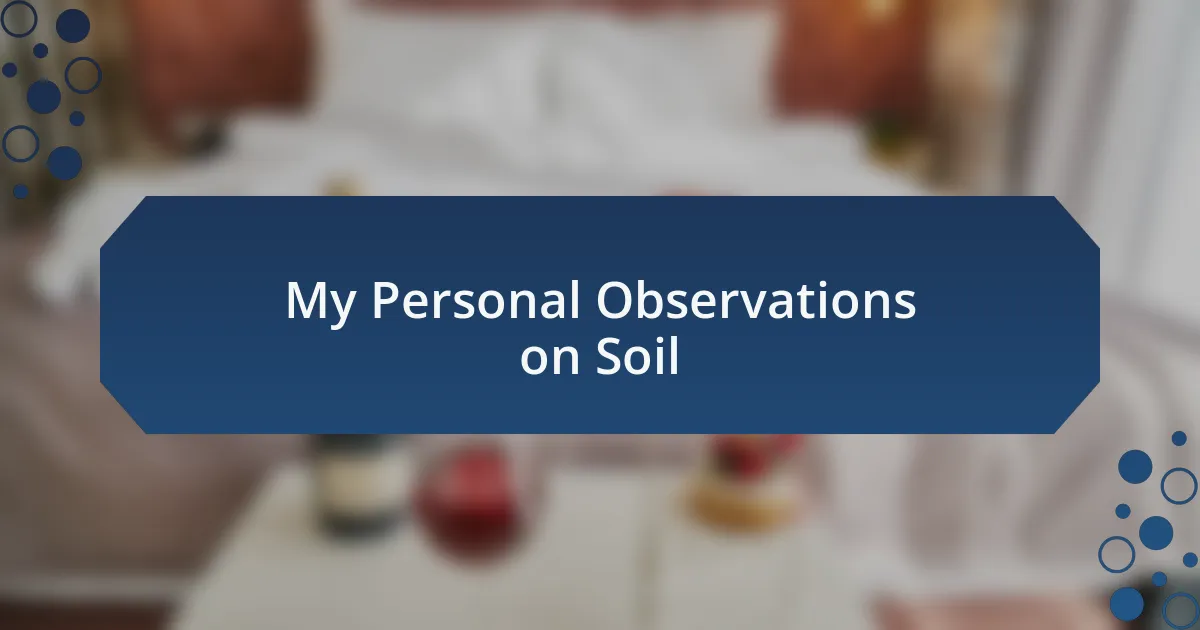Key takeaways:
- Soil moisture retention significantly affects vineyard health and grape development, with clay soils retaining moisture better than sandy soils.
- Incorporating organic matter and compost enhances moisture retention, while methods like mulching and crop rotation further improve soil health and resilience.
- Utilizing various soil moisture measurement techniques, such as feel tests and moisture meters, helps optimize irrigation strategies and supports better wine production.
- The interconnectedness of soil health, organic practices, and vineyard ecosystems fosters a thriving environment for grapes and other organisms.

Understanding Soil Moisture Retention
Soil moisture retention is crucial for healthy vineyard growth, and I’ve seen firsthand how it affects grape development. When I first started my organic vineyard, I was surprised to learn that not all soils retain moisture equally. The right soil composition can make a significant difference in how efficiently water is held, which ultimately influences the overall vitality of the vines.
In my exploration of different vineyard sites, I noticed that clay soils, for example, tend to hold moisture much better than sandy soils. This discovery left me wondering how much a small change in soil type could impact not just the yield, but the flavor profile of the wine produced. It was enlightening to witness how the interplay of soil texture and moisture impacted the resilience of the vines during dry spells.
Over time, I’ve come to appreciate the role of organic matter in enhancing moisture retention. Adding compost not only improves soil structure but also significantly boosts its ability to retain water. Have you ever considered how such simple practices can lead to healthier plants and, as a result, a richer harvest? It’s fascinating to think about how these decisions in soil management echo throughout the entire winemaking process.

Methods for Testing Soil Moisture
Soil moisture measurement can be done using various methods, each with its unique benefits. One straightforward technique I often employ is the feel test. By grabbing a handful of soil and squeezing it, I can gauge its moisture level; if it crumbles easily, it’s too dry, but if it forms a ball, it retains enough moisture. There’s something almost primal about this tactile approach that connects me directly with the land.
For a more precise analysis, I’ve also turned to moisture meters. These handy devices provide immediate feedback on moisture levels, allowing me to make informed watering decisions. I recall the moment I first used one and was astounded by how accurately it reflected the conditions beneath my feet. The data it provided was a game changer for my irrigation strategy, ensuring I wasn’t under or overwatering the vines—something that could dramatically impact both yield and quality.
Another method I like is the use of soil probes that extract samples for detailed analysis. By sending these samples to a lab, I gain invaluable insight into the moisture-holding capacity of different soil layers. Reflecting on when I first did this, the results were eye-opening; knowing the specific moisture dynamics in my vineyard opened new avenues for targeted management. Have you ever considered how knowing your soil better can empower your vineyard practices? Each method, whether simple or technical, helps forge a deeper bond with the land, ultimately leading to better wine production.

Enhancing Soil Moisture Retention
To enhance soil moisture retention, it’s essential to focus on organic matter incorporation. I often mix compost into my vineyard soil, and the transformation is remarkable. Watching the soil structure improve over time evokes a sense of satisfaction, knowing that these natural amendments will hold moisture like a sponge, particularly during those dry spells.
Mulching is another technique I find invaluable. Applying a layer of organic mulch not only suppresses weeds but also reduces evaporation. I remember one particularly hot summer when I mulched my rows; the cooler soil temperatures made all the difference for my vines. Have you ever seen how a simple layer of straw or leaves can create a more stable microclimate?
Lastly, crop rotation plays a crucial role in maintaining soil health. By alternating my vine cropping with cover crops, I’ve noticed significant increases in moisture retention. The roots of these plants penetrate deeper, creating channels in the soil that enhance water infiltration. It’s a gratifying realization that such practices are not just beneficial for the crops; they contribute to a more resilient and thriving ecosystem in the vineyard.

My Personal Observations on Soil
When I think about the soil in my vineyard, I can’t help but feel a deep connection to its life-giving essence. Just the other day, as I dug my hands into the dark, crumbly earth, I realized how much the texture has changed since I started prioritizing organic amendments. It’s almost as if the soil has come alive, absorbing water and nutrients with an eagerness that genuinely surprises me.
I’ve also come to appreciate the way my soil responds to seasonal changes. After a heavy rain, the ground retains moisture longer, and I notice how it breathes, almost as if it’s exhaling after a long drought. It’s fascinating to observe the variations in moisture levels throughout the year; has anyone else felt that heartbeat of the earth under their fingertips?
What truly strikes me is the interconnectedness of the soil with the entire vineyard ecosystem. When I see the earthworms thriving, I find myself smiling, knowing that they are indicators of healthy soil. Their presence signals rich, well-aerated earth. It’s like a reassuring reminder that in nurturing my soil, I’m not just supporting my vines; I’m fostering a robust community that flourishes together.